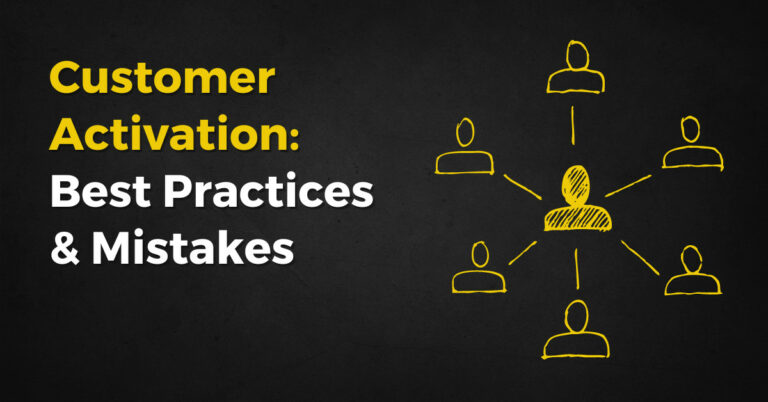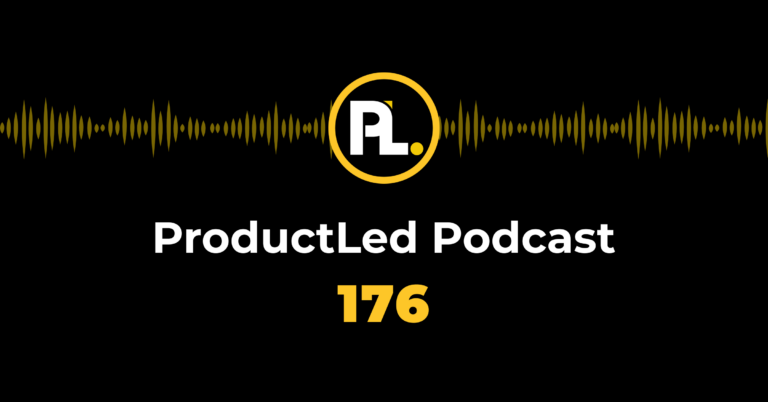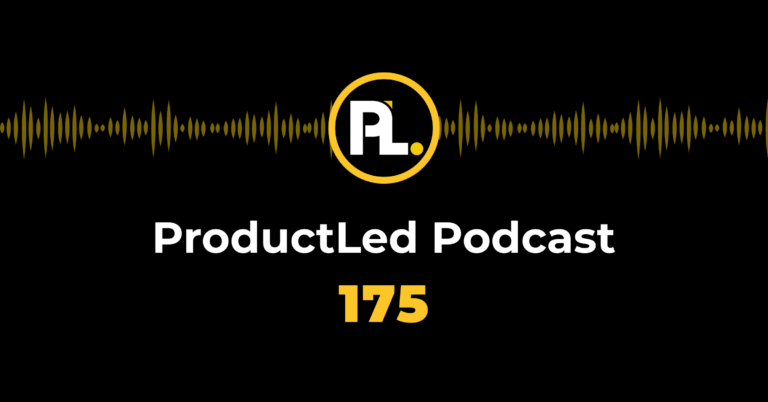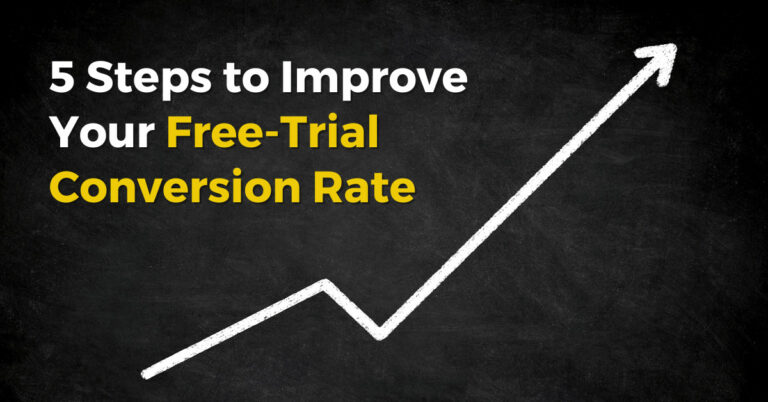In the realm of selling software, the future belongs to product-led sales — a strategy emphasizing direct access to SaaS products, thus fostering a self-sufficient user experience that ultimately drives conversions.
Many product-led companies eventually incorporate sales teams to accelerate revenue growth.
By the end of this article, you’ll better understand the dynamic interplay between sales-led and product-led growth strategies and how blending these approaches can refine your distinct go-to-market (GTM) strategy.
Highlighting this transformative shift from traditional sales practices are compelling success stories.
Zendesk got to 5,000 customers without a Sales team.
Unbounce got to 10k customers without sales.
Proposify made it to $3.5M ARR pre-sales people.
Basecamp got to 3 million customers without salespeople.
The way we sell software has changed.
But how?
Traditionally, you would need to book a demo with a sales rep to see what a software solution could do for you.
The whole process revolved around telling consumers how the product could benefit them.
A sales-led go-to-market strategy rewards friction. The faster they filter you out of the funnel, the more time they can focus on helping high-value prospects.
For many organizations, this whole process can take months just to purchase a solution.
Today, modern SaaS companies are approaching sales in a completely new way.
Instead of helping buyers go through a long, drawn-out sales cycle, they give the buyer the “keys” to their product. The company, in turn, focuses on helping the buyer become so successful using the product that upgrading to a paid plan becomes a no-brainer.
When you compare the two strategies, it really boils down to this...
Do you want to show or tell people your value?
The product-led sales model
The product-led sales model (also called the hybrid model) integrates the self-serve principles of PLG with traditional sales components.
In PLG, potential customers can experience product value on their own time through free trials or freemium versions. Product-led sales optimizes this GTM strategy with targeted outreach from sales representatives to high-touch accounts, educating them on the advantages of upgrading to a higher product tier.
A product-led sales approach helps pinpoint users prioritized by the sales team and formulate effective strategies to nurture leads, ultimately resulting in successful deal closures.
A crucial element of product-led sales is the strategic timing of sales engagement to ensure a seamless user experience from prospect to paying subscriber.
Perceived Value vs. Experienced Value
When people sign up for any product, here's what's going through their heads:
- What you promise is the perceived value.
- What you deliver is the experienced value.
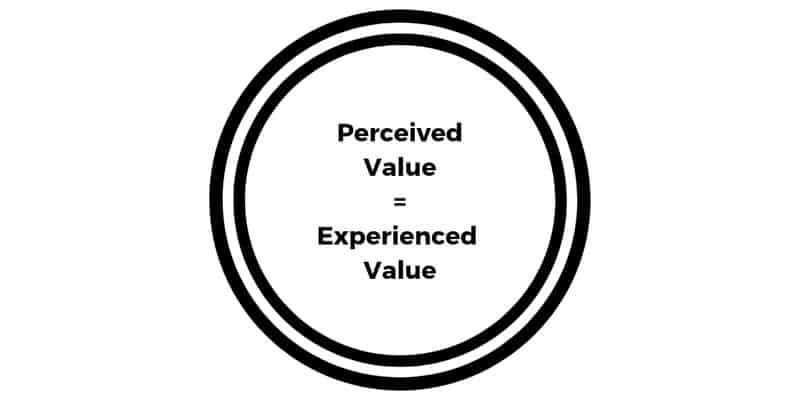
In an ideal world, the perceived and experienced values are the same.
Yet, for many customers – especially when selling software – the actual experience often fails to align. The disparity between promise and delivered value is known as a “value gap.”
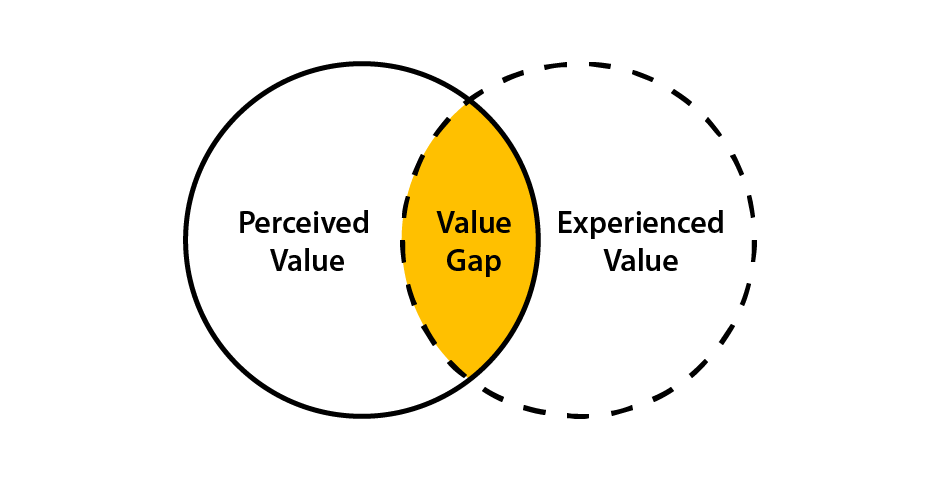
The Value Gap Explained
The value gap is one reason why product-led businesses are booming.
People want to "try before they buy" and experience your value proposition on their terms.
Keeping your word is one of the fastest ways to build trust and sell your product. If you fail to deliver, your user experiences a nasty value gap.
The bigger your value gap, the leakier your funnel. According to Intercom, 40–60% of users who sign up for your product will use it once and never return.
That's a lot of potential customers to say goodbye to.
Yet, it doesn't have to be that way.
Companies like Zendesk, Unbounce, and Basecamp have invested heavily in creating an experience that helps users become successful without needing a human to talk to them.
This begs the question...
How?
The rise of the user
Read any Sales book, and they'll tell you to focus on building a relationship with the decision-maker.
They're the ones with the money who can sign off on purchases.
Although that's true, they often do not use the product.
That is the user.
Most companies ignore the user.
Most still do.
But here's the real deal.
The decision-maker, although still required to sign off on large enterprise purchases, can't be bothered with every little purchase her team needs to make.
Does your VP of Marketing need to sign off on a $29 monthly purchase?
Absolutely not.
An employee might just need to tell the decision maker why they need the solution and borrow their company credit card to make the purchase.
The way we are selling software has changed.
What's driving this shift in buying behavior
It has never been cheaper to build a SaaS company. (HackerNoon even goes so far as to claim that you can now build a SaaS product with $0.)
However, because of this low barrier to entry, there’s no shortage of competition. As a result, Andrew Chen argues, acquiring customers is becoming more expensive.
Customer acquisition costs (CACs) have increased by over 55% in the last five years — customers' willingness to pay for features dropped by 30% during that same period.
So, on the one hand, we have rising costs; on the other, we have a lower willingness to pay.
You don’t have to be a financial whiz to understand that this means your expenses go up while your profitability goes down.
You risk being disrupted using the same sales-led GTM strategy as everyone else.
Why the sales-led GTM strategy is at risk
If the only way you can sell a product is if someone talks to you, you’re using a sales-led strategy. You're not off the hook even if you have a marketing engine that generates thousands of leads for your sales team.
This is because relying on your sales team to make every sale prevents you from helping your users self-educate. Whether you know it or not, you are adding an incredible amount of friction to the entire buying process. It also keeps your CACs high — great Sales teams aren’t cheap.
When to consider a sales-led GTM strategy
Even while being at risk of being disrupted, these are some reasons why you still might consider using a sales-led GTM:
1. Ability to close high Lifetime Value (LTV) customers.
The main lure of a sales-led GTM is that you can close customers with a high Annual Contract Value (ACV). This sounds great but can often lead to poor revenue diversity, with several customers making up a large percentage of your Annual Recurring Revenue (ARR).
If a single customer leaves, it could ruin your revenue projections and force you to lay off your employees unexpectedly. That said, if you're tackling enterprise first and have a highly complex solution, you may need a high-touch sales model because of the complexities of their procurement process and implementation.
2. Perfect for hyper-niche solutions.
If you have a product with a small Total Addressable Market (TAM), it often makes sense to forgo a product-led model in favor of a sales-led model.
One of the biggest reasons is that the quality of your relationships with your market will outsize how you grow your business. In contrast, the product-led model is built for a large TAM where you can scale rapidly.
3. Perfect for new categories.
When launching a new category, you must change how people approach problems. This takes time and requires you to educate people on how to do things differently.
As a result, it often makes sense to start with a sales-led approach to understand better the customer’s pain points, objections, and core problems in implementing your solution. If you jump too quickly to a product-led model with a new category, you risk a high churn rate because you simply don’t understand what it takes for customers to succeed.
If you don’t have successful customers, a product-led model may amplify the problem. Before going down the product-led route, ensure you know what goes into customer success.
Disadvantages of a sales-led GTM strategy
Here are the cons of traditional sales:
1. There are higher acquisition costs.
A big downside of the high-touch sales model is that the CAC is out of control, and the sales cycles are incredibly long. As you might have guessed, high-touch sales are a leading indicator of CAC.
The LTV of a customer has to be high enough to recoup the investment in acquiring each new customer to ensure the high-touch sales model remains profitable. Most sales-led businesses charge their customers a hefty premium to reach that LTV. That premium price isn’t because the solution is more valuable but because the customer acquisition model is more expensive.
“The more it costs you to sell something, the more it will cost others to buy it.”
Paul Graham, founder of Y Combinator
In short, a sales-led strategy passes costs to consumers without connection to product value.
If you currently use a sales-led GTM, you must watch out for competitors with a more efficient customer acquisition model. They can steal your market share by offering a comparable product with a more affordable price tag.
2. The customer acquisition model is leaky.
In a sales-led organization, the customer acquisition model has a big leak.
According to SiriusDecisions, 98% of marketing-qualified leads (MQLs) never result in closed business.
One reason this conversion rate is famously awful is that the MQL model has a few hidden flaws:
- It encourages marketers to gate content to hit their MQL goals.
- It focuses on content consumption as a leading indicator of intent.
- The entire process rewards creating friction in the buying process.
As a result, there is often a disconnect between marketing and sales. Should we be surprised? Does downloading a whitepaper mean you’re ready to buy? Absolutely not.
3. The organizational structure hinders great product development.
According to Elie Khoury, CEO of Woopra, the typical sales-led business structures their team like the graph below:

On the left side, your profit center handles your sales, marketing, and customer success teams. Then, you have your cost center, which creates the product on the right.
The problem with this organizational structure is that the product is often an afterthought. If the sales team closes a really big customer on the condition of a few product tweaks, the engineering and product team have a new project to do.
When your organization leads with sales and follows with product, you’re forced to move upmarket and get on the elephant-hunting treadmill.
And it’s not just my opinion.
Case Study
These are the exact words from the CEO of a company that recently raised a Series C from great investors, is growing rapidly, has strong customer retention, and has a top-notch leadership team.
“My biggest regret is that our first customer was $1M ACV. Ever since that first customer, our product, go-to-market, our support model have all been pulled in one direction — high-end enterprise. Our first $1M ACV customer forced us to get on the elephant hunting treadmill, and we’ve never been able to get off it. Our board, our employees, everyone expects us to only go after customers that were as large or larger than our first customer. And I’ve been watching this new competitor emerge that’s going after the same market as we are, except from the low end. They are tiny but growing rapidly. And it’s too hard for us to compete with them — we don’t have the people, technology stack, support model or frankly, the mindset.”
The CEO’s words reinforced something I have long believed: truly great SaaS companies are built to be product-led.
Why SaaS businesses are going product-led
Over the years, countless SaaS businesses have switched from a sales-led GTM to a product-led GTM strategy to create a moat around their business. This is the same strategy that many respected software companies have adopted, including Grammarly, Slack, and Dropbox.
According to Woopra's Khoury, product-led organizations are unique because they lead with the product across every department.

Having the Product team involved throughout the business allows product-led businesses to create a seamless customer experience across every department.
What makes a product-led business unique is that all teams leverage the product to hit their goals. Here’s what PLG teams focus on:
- A product-led marketing team asks, "How can we use our product as the #1 lead magnet?"
- A product-led sales team asks, "How can we use the product to qualify our prospects for us?" That way, we have conversations with people that already understand our value.
- The product-led customer success team asks, "How can we create a product that helps customers become successful without our help?"
- The product-led engineering team asks, "How can we create a product with a quick time-to-value?"
Even though the product-led approach can put your business in a great position to dominate your market, it isn’t without its risks. In fact, this is one of the main reasons I’m writing this article.
Product-led growth isn’t easy to implement. It’s not just allowing people to try your product before buying. Your entire approach as an organization needs to shift. Instead of leading with sales and following with product, you need to ensure every team has a hand in helping each user succeed.
You'll reap incredible rewards if you can put together a successful product-led sales strategy.
Benefits of product-led growth
Product-led businesses have an unfair advantage and enjoy access to a dominant growth engine and significantly lower CACs.
Dominant growth engine
Product-led businesses tend to scale faster than their competitors in two powerful ways:
- Wider Top-of-Funnel: A free trial or freemium model opens your funnel to people earlier in the customer journey. This is powerful because, instead of prospects filling out your competitor’s demo requests, they evaluate your product.
- Rapid Global Scale: While your competitors are hiring new sales reps for each region under the sun, you can focus on improving your onboarding to service more customers worldwide in a fraction of the time.
A significantly lower CAC
Free software also builds a moat around your business in three powerful ways:
- Faster Sales Cycles: By having your prospects onboard themselves, you can significantly reduce your prospect’s time-to-value and sales cycle. Once people experience the value of your product, the next logical thing to do is upgrade. The quicker your users can accomplish a key outcome in your product, the quicker you can convert your free users into paying customers.
- High Revenue-Per-Employee (RPE): Software was always built to scale well, but with a product-led approach, you can do more with fewer people on your team. Less hand-holding means higher profit margins per customer. Just take a look at Ahrefs in 2019. They have a $40 million ARR business with 40 employees.
- Better User Experience: Since your product is built for people to onboard themselves, people can experience meaningful value in your product without any hand-holding.
The benefits of a product-led GTM strategy don’t stop there. According to OpenView, product-led businesses are valued more than 30% higher than the public-market SaaS Index Fund.
When to hire a sales team for a product-led organization
Hiring a sales team for your product-led organization boils down to one metric: the
Lifetime Value (LTV) of a customer.
Depending on your LTV, you can afford to offer three levels of support.
- High-Touch: Typically reserved for enterprise and complex or expensive products that require hand-holding.
- Low-Touch: A common approach for free trial and freemium models with a high Lifetime Value (LTV).
- No-Touch: Completely streamlined onboarding flow. Often has a low LTV.
Now, do you have to pick one level of support and stick with it?
Absolutely not.
Even though Slack, Dropbox, Unbounce, and Zendesk have sold millions to consumers who haven't once talked to Sales, they've added sales reps (a product-led sales approach) to move upmarket.
But how they approach sales is still very different than your traditional sales-led SaaS business.
Tips on how to integrate sales into product-led growth
It's crucial for sales and product teams to work together in PLG to achieve shared goals like boosting user adoption and growing revenue. The following tips highlight essential strategies for smoothly integrating sales into the product-led framework.
Align your sales and Product teams
By bringing the sales and product teams together, you can ensure that both teams are working towards the same goal of driving user adoption and revenue growth.
Identify high-value users
Sales can be crucial in identifying high-value users who will likely convert into paying customers. By analyzing user behavior and engagement data, sales can focus their efforts on users most likely to convert.
Nurture leads through the sales funnel
Sales can help nurture leads through the sales funnel by providing relevant content and resources, answering their questions, and addressing any objections they may have.
Close deals and drive revenue
Ultimately, the Sales team is responsible for closing deals and driving revenue. By leveraging the product-led growth model, sales can focus on closing deals with highly engaged users who have already experienced the product's value.
Buyers need a seamless and personalized experience throughout their journey. They want to feel understood and supported. By adding sales into a product-led growth strategy, you can meet these needs and provide a more holistic experience for your buyers.
Making the shift to a product-led sales model can pose challenges, yet it's often a necessary step for your business's expansion. For a detailed, step-by-step guide on achieving predictable and profitable growth in 7-figure product-led businesses, explore the ProductLed GTM System™.
This comprehensive framework covers:
- The three phases for unlocking exponential growth
- Identifying the nine components that may be hindering your scalability
- The crucial order of attack to maximize traction
The ultimate aim of the ProductLed GTM System is to empower you to scale your self-serve revenue more efficiently without intensifying your workload.


